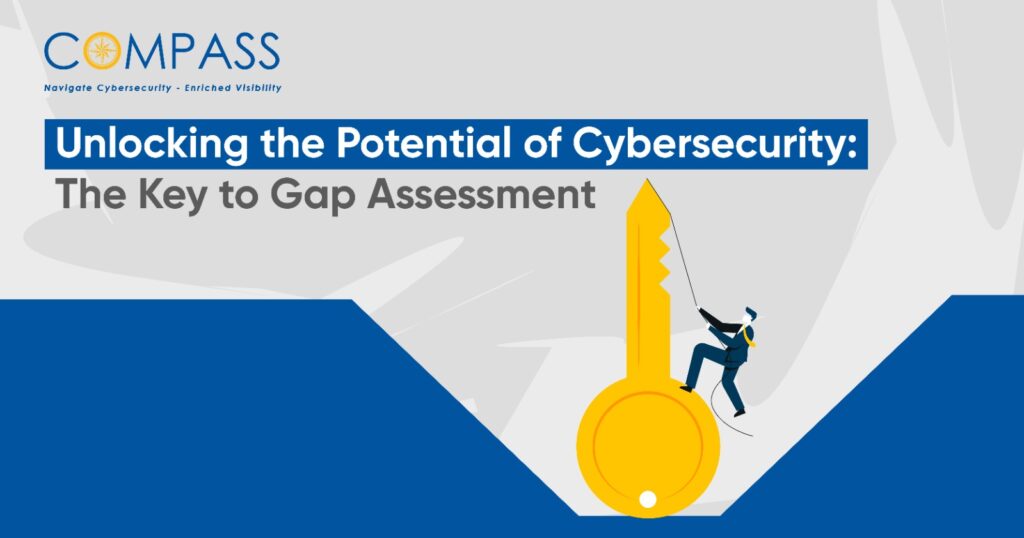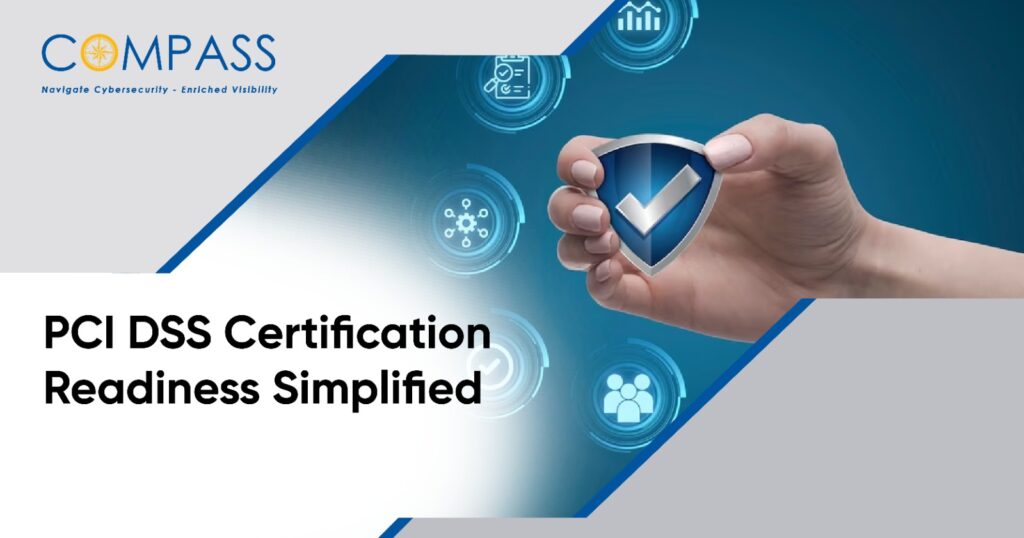
In the ever-evolving realm of cybersecurity, organizations face an unceasing challenge to secure their digital fortresses. A mid-sized financial services firm prides itself on its commitment to safeguarding customer data and financial assets. However, recent cyber threats have escalated, and the firm is keen to ensure that its cybersecurity defences remain resilient. In this scenario, a Gap Assessment becomes a crucial tool for the organization, allowing them to understand where they stand in the cybersecurity landscape, what gaps exist in their security measures, and how they can fortify their defences.
A Gap Assessment is a systematic and strategic process that evaluates an organization's current security practices, protocols, and technologies against industry standards, best practices, and compliance requirements. This assessment provides a holistic view of the organization's security posture and is essential in identifying vulnerabilities and security gaps.
In a rapidly changing world where technology evolves, regulations tighten, and threats become more sophisticated, organizations need a compass to navigate their way through the complex landscape of cybersecurity. Gap Assessments serve as that compass, providing the necessary guidance to understand where an organization stands, where it should be, and how to bridge the divide between the two. They are the essential tool that empowers businesses to proactively protect their assets, ensure compliance, and stay ahead of emerging threats. The benefits of an organization in performing a Gap Assessment are as follows:
The Gap Assessment process is a structured and systematic approach that enables organizations to evaluate their current state and compare it to their desired state, whether in terms of cybersecurity, operational efficiency, or compliance. It can be done in the following way:
In the world of Gap Assessments, the right tools can make all the difference, enabling organizations to navigate the path from their current state to their desired state with precision and efficiency. Let's explore a range of powerful tools that empower organizations to conduct thorough Gap Assessments and take proactive steps toward achieving excellence in various aspects of their operations.
These tools empower organizations to not only identify gaps but also to take actionable steps in closing them, safeguarding their operations, and ensuring continuous improvement.
COMPASS, a specialized lightweight platform, enhances your Internal Audit and external audit processes and user experience. Some of the benefits of using COMPASS include:
In the high-stakes world of cybersecurity, Gap Assessments are indispensable for safeguarding digital assets and ensuring regulatory compliance. By employing a Gap Assessment, organizations can pinpoint and prioritize vulnerabilities, maintain regulatory adherence, and protect sensitive data. Tools like COMPASS by CyRAACS simplify and enhance this process, providing a clear roadmap to a safer and more resilient cybersecurity future.

In today's digital age, where data is the lifeblood of business operations, protecting sensitive financial information has never been more critical. The Payment Card Industry Data Security Standard (PCI DSS) was established to ensure the secure handling of card data, and compliance with this standard is mandatory for any organization that processes cardholder information. Achieving PCI DSS certification can be a daunting task, but with a simplified approach, it becomes an achievable goal. In this article, we'll break down the process of PCI DSS certification readiness and provide practical guidance to simplify this complex journey.
Understanding the basics of PCI DSS is crucial before we begin the certification preparedness process. A set of security regulations called the Payment Card Industry Data Security Standard is intended to safeguard cardholder data. It is applicable to any company that handles, maintains, or sends card data. An organization's dedication to data security and adherence to industry standards is demonstrated by its PCI DSS certification.
Twelve high-level requirements make up PCI DSS, which is then broken down into multiple sub-requirements. These specifications address a number of data security-related topics, such as access control, network security, encryption, and routine testing and monitoring. It takes a methodical and thorough approach to meeting these requirements in order to achieve compliance.
1. Know Your Scope
Determining the extent of your cardholder data environment is the first step toward being prepared for PCI DSS certification. This entails figuring out which people, systems, and procedures have access to card data. Knowing your scope is important since it determines how much work you have to put into complying with regulations.
Your scope can be restricted to particular web servers and payment processing apps, for instance, if your company solely handles card payments online and doesn't keep track of cardholder information. However, your scope will be wider and include data handling and storage systems if you keep cardholder data for recurrent transactions.
2. Identify Applicable Requirements
Determine the precise PCI DSS criteria that apply to your organization after determining your scope. Depending on your scope and how you manage cardholder data, the rules could change.
For example, you will need to concentrate on encryption, access control, and routine security testing if your scope involves storing cardholder data. Certain criteria might not apply if your scope is restricted to processing card transactions without data storage.
3. Conduct a Gap Analysis
A gap analysis is a critical step in assessing your organization's current state of compliance with PCI DSS requirements. This involves comparing your existing security practices and policies to the standard's requirements.
During the gap analysis, identify areas where your organization is already in compliance and areas where improvements or adjustments are needed. This analysis serves as a roadmap for prioritizing compliance efforts.
4. Develop a Compliance Plan
Based on the results of your gap analysis, create a compliance plan that outlines the specific actions needed to address non-compliance areas. Assign responsibilities and set deadlines to ensure that everyone involved understands their role in achieving compliance.
Your compliance plan should include a combination of technical, procedural, and policy changes to align your organization with PCI DSS requirements. It may involve implementing firewalls, encryption measures, access controls, and security policies, among other things.
5. Implement Security Measures
With your compliance plan in hand, begin implementing the necessary security measures. This could involve configuring firewalls, deploying intrusion detection systems, and encrypting sensitive data. Ensure that all changes align with the PCI DSS requirements and secure your cardholder data environment.
6. Regularly Monitor and Test
Continuous monitoring and testing are essential components of PCI DSS compliance. Regularly assess your security controls, conduct vulnerability scans, and perform penetration testing to identify and address any vulnerabilities or weaknesses in your systems.
Monitoring and testing should be ongoing to maintain a high level of security. This ensures that your organization remains vigilant and responsive to emerging threats.
7. Document Your Compliance Efforts
Proper documentation is a fundamental aspect of PCI DSS certification readiness. Maintain records of your compliance plan, security measures, monitoring and testing results, and any security incidents or breaches. Detailed records will be essential during the certification process to demonstrate your organization's commitment to data security.
8. Engage a Qualified Security Assessor (QSA)
To achieve PCI DSS certification, you'll need to engage a Qualified Security Assessor (QSA). A QSA is an independent security firm certified by the PCI Security Standards Council to assess and validate your compliance with the standard.
The QSA will conduct an assessment of your organization's processes, controls, and documentation to determine if you meet the PCI DSS requirements. This assessment includes an on-site visit, interviews with key personnel, and a review of your compliance documentation.
9. Submit a Report on Compliance (ROC)
Following the assessment by the QSA, you'll be required to submit a Report on Compliance (ROC). This report details the results of the assessment and serves as the formal documentation of your PCI DSS compliance.
The ROC includes information about your organization's scope, security measures, monitoring and testing results, and compliance efforts. It provides an overview of how you've addressed each requirement.
10. Maintain Ongoing Compliance
Achieving PCI DSS certification is a significant accomplishment, but it's not a one-time effort. To maintain certification, continue to follow the steps outlined above. Regularly update your security measures, conduct monitoring and testing, and engage with your QSA for annual assessments and ROC submissions.
COMPASS, a specialized lightweight platform, enhances your Internal Audit and external audit processes and user experience. Some of the benefits of using COMPASS include:
PCI DSS certification readiness can seem overwhelming, but by breaking it down into manageable steps and understanding your organization's specific scope and requirements, you can simplify the process. It's essential to engage with experts, maintain a proactive stance on security, and document your efforts throughout the journey. Ultimately, achieving PCI DSS certification is not only a regulatory requirement but also a demonstration of your commitment to protecting sensitive financial information and maintaining trust with your customers.